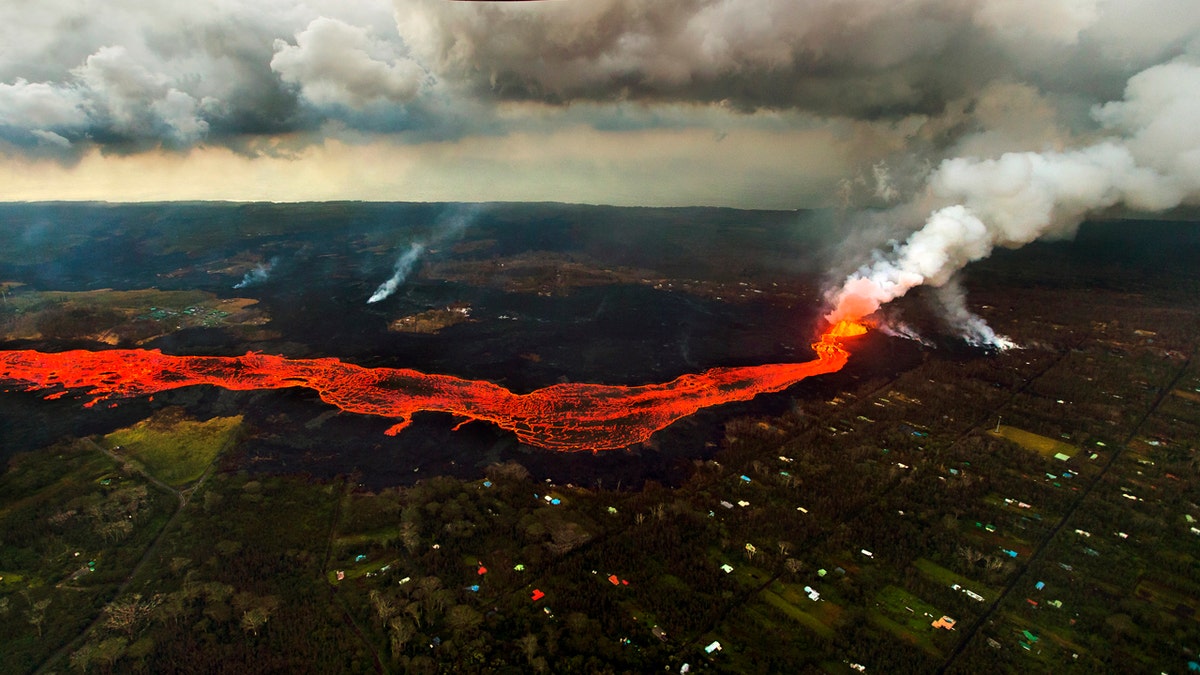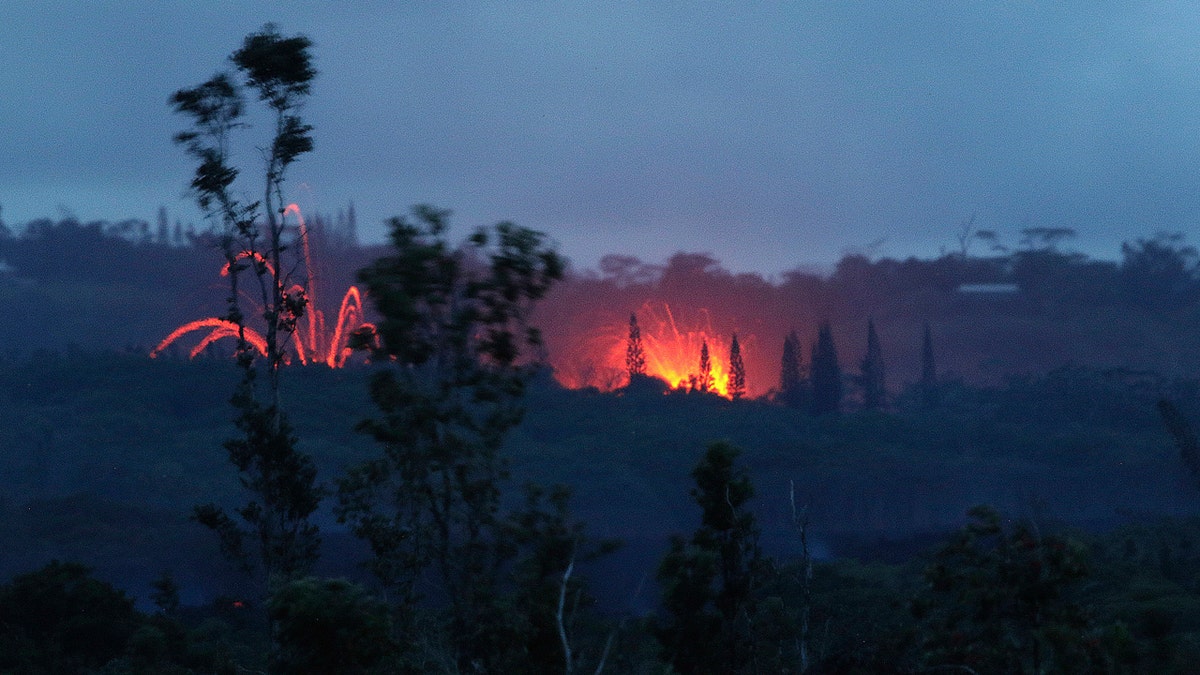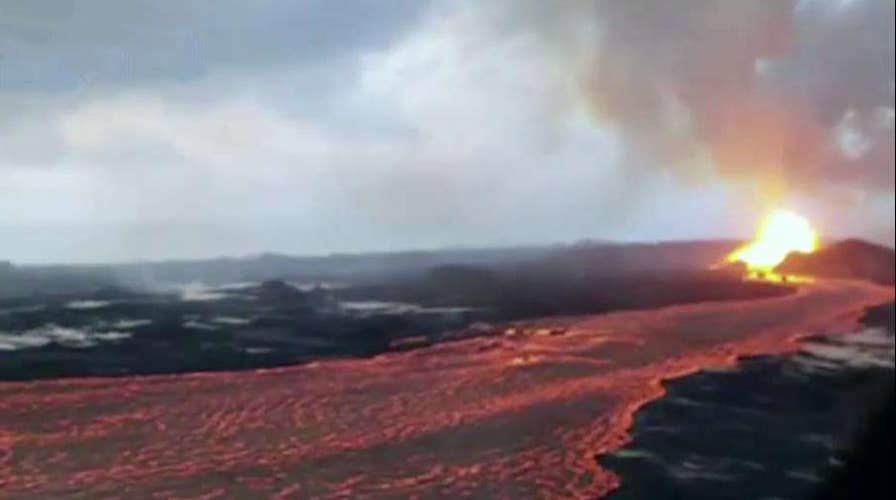Hawaii's Kilauea volcano spews more lava and ash
Hawaii residents begin to assess damage as thousands are evacuated; Jeff Paul reports.
More than 800 survivors of Hawaii’s Kilauea volcano are seeking help from the federal government following five weeks of unprecedented turmoil and destruction with no end in sight.
"Everybody's got a different story but I think a lot of people are just unsure because the fissure just keeps going," Thomas Mason, who evacuated from his home in Leilani Estates with his wife, told Hawaii News Now on Monday.
Mason, who waited in the FEMA line for three hours on Friday, was told to prepare for rejection and be ready to appeal.
He and his wife moved from Maui in November. They were in the middle of building their retirement home on the Big Island when Kilauea erupted on May 3. Like so many others, they were forced to flee. But unlike most, getting money to rebuild their unfinished retirement home will be complicated.

Lava from the Kilauea volcano flows in and around Pahoa, Hawaii, Sunday, June 10, 2018. (AP Photo/L.E. Baskow)
"You don't get house insurance until you have a house. We got three quarters of a house," he said.
For Mason, if FEMA doesn’t come through with money, there is no plan B.
HAWAII VOLCANO ERUPTION: HOW MANY PEOPLE ARE KILLED BY VOLCANOES?
Last week, President Trump approved federal emergency housing aid for victims of the volcano. The approval came a day after Hawaii Governor David Ige formally requested federal assistance for the roughly 2,800 residents on the Big Island who have lost their homes.

This photo provided by the U.S. Geological Survey shows where lava from Kilauea Volcano is entering the ocean and the resulting laze plume where lava is entering the sea at Kapoho on the island of Hawaii at dawn Wednesday, June 13, 2018. (U.S. Geological Survey via AP))
However, there was no specific dollar figure sought by Ige or attached to the package Trump approved, though The Honolulu Star-Advertiser reported that eligible homeowners and renters could get $34,000 each.
In addition to money for housing assistance, Trump green-lighted relief from other FEMA programs to help those affected by Kilauea. They include crisis counseling, unemployment benefits and legal aid.
GREEN GEMS SHOOTING FROM KILAUEA VOLCANO IN HAWAII AS LAVA FORMS NEW PENINSULA
Kilauea’s recent volcanic eruption is the most destructive in the U.S. since the 1980 explosion of Mount St. Helens in Washington state.
Lava from Kilauea has been spewing for more than a month. The thick, gooey, molten magma has shifted into a wider, hotter flowing river of lava traveling about 200 yards per hour.

In this May 15, 2018 file photo, lava shoots into the night sky from active fissures on the lower east rift of the Kilauea volcano near Pahoa, Hawaii. (AP Photo/Caleb Jones)
On Monday, volcanologists said magma under the surface of fissure 8 is hotter and less crystalized than they thought.
“The whole lower east rift zone has a plumbing system two mules below surface and it is delivering hotter magma at fissure 8, which is giving runnier lava that’s flowing to the ocean,” Charles Mandeville, program coordinator for volcano hazards program at the U.S. Geological Survey, said.
The geological phenomenon has piqued the curiosity of many visitors and residents of the Big Island. Since the eruptions started, about 40 people have been arrested for loitering in lava zones, according to state officials.
Authorities say those caught face steep fines and up to a year in jail.

